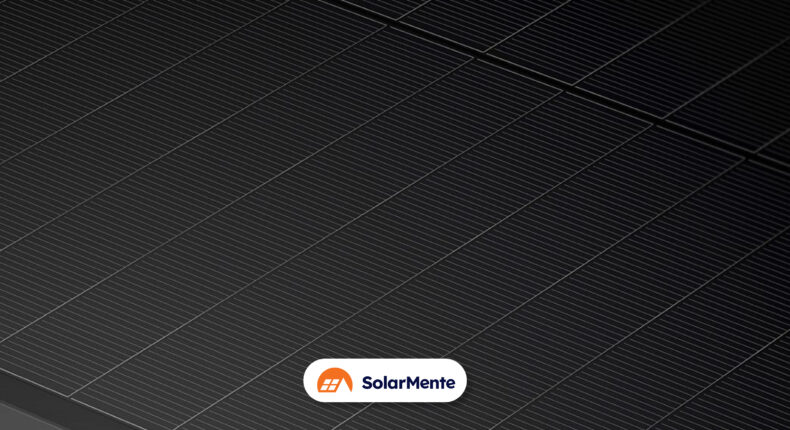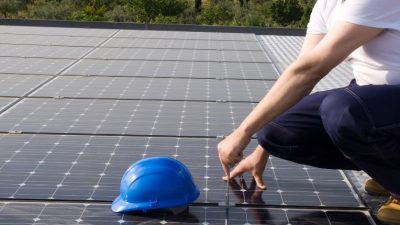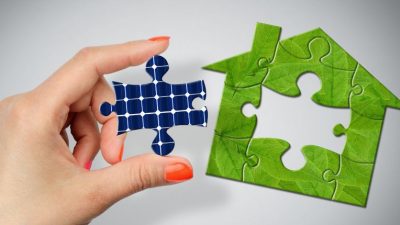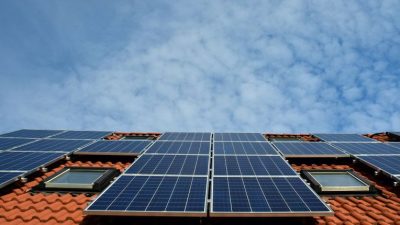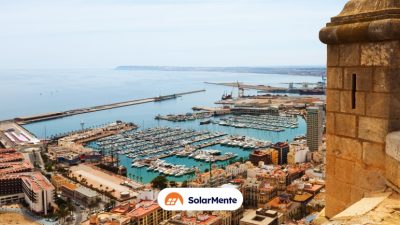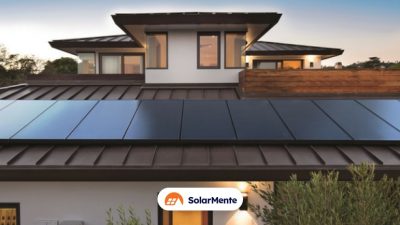Installations of solar panels in Spain have grown by more than 100% in 2021, according to the Spanish Photovoltaic Union ( UNEF).
These impressive figures have been boosted by the repeal of the sun tax and the recent subsidies for residential and community self-consumption.
Just as we are looking for the most efficient electrical appliances for our home, it is also necessary to select the best solar panel manufacturers in order to provide solar energy for our own consumption over a long period of time.
Hyundai solar panels are one of those alternatives among which we bet on the company that, in addition to being in the tier 1 list, enter other factors of the brand where it stands out especially for its most advanced technology, quality, affordable price and solvency.
Today, we are going to detail which Hyundai solar panels we are betting on at SolarMente. We will also take a closer look at the following topics:
- What model of solar panels we use from Hyundai.
- What are the manufacturer’s warranties
- What is Shingled technology and what are its advantages?
- History about Hyundai
Hyundai Shingled solar panels: why we go for them
Hyundai has different product ranges when it comes to solar panels. Some are specifically for residential use, others for industrial use and even models that are suitable for both.
At SolarMente, we are committed to the HG (FB) range, specifically, we highlight the Hyundai HG SERIES G12 PERC Shingled module. Designed for industrial, commercial and residential roofs.
Let’s go into detail:
Hyundai HG SERIES G12 PERC Shingled
This monocrystalline panel from the South Korean brand has a special feature and that is the technology used. We are talking about the G12 PERC Shingled technology that provides high efficiency with better performance in conditions of low solar irradiation.
This panel maximises the installation capacity in limited spaces, i.e. it can be placed on roofs with limited space.
Both light induced degradation (LID) and potential induced degradation (PID) are eliminated to ensure superior panel performance over its lifetime.
Another plus point is the mechanical resistance. Thanks to the tempered glass and the reinforced frame design, it is more resistant to adverse weather conditions such as heavy snowfall or strong winds.
In addition, it claims to be more resistant to corrosion. The manufacturer has carried out various tests in extreme environmental conditions with ammonia or salt spray. And as if that were not enough, it achieves an efficiency of 21%.
Although the design is not the most important feature, we would like to highlight its aesthetic appearance in black that blends in with the house and goes unnoticed more easily.
Hyundai solar panel warranties
Hyundai offers a product and production warranty of 25 years. It covers all defects in material or workmanship, including potential induced degradation. This is a higher figure compared to other manufacturers who offer only 15 years.
This financially strong brand offers a reliable warranty, but remember that this warranty is for Europe and Australia.
Shingled Hyundai technology: what it is and how it works
Shingled technology is a process advancement that Hyundai announced in 2021. It minimises the gaps between cells to improve the performance of the PV system.
Translated into English, the word means “overlapping sheets”. Precisely because this is the way they will remain in place.
Even so, the technology used is still PERC.
So what is the difference compared to other processes using this technology? The way the photovoltaic modules are connected.
Let’s take a look at the process step by step.
The special thing about the Shingle technology is that the passive part of the surface of each panel is minimised so that there is space. That is, the contacts are not made at the top and bottom as with conventional panels where there is space between modules, but around the edges of the cells and an adhesive is added to the underside to conduct electricity. This element is called ECA.
In the end we get a structure with columns of cells where the connectors are not visible because they are overlapped.
In this way, they have greater flexibility because they are smaller and more numerous.
What do we get with all this process?
A higher performance of the solar panels together with a higher power per square metre.
In addition, the reduction of the separations reduces the resistance of the conductivity by having a larger active space, thus avoiding welding errors.
Statistically speaking, we achieve 10% more efficiency in our panels by reducing the space between modules and having more surface area.
Advantages of Hyundai solar panels with Shingled technology – why we choose these models
More power per square metre
As mentioned above, the space between the solar panels is reduced to a minimum thanks to a different connection around the edges of the module and no need for busbars at the top.
This helps us to increase the exposure of the PV system to sunlight.
This technology makes maximum use of the available space and does not require cell spacings like other modules.
Less energy loss due to shading
Since the cells are placed on tiles, they can be configured in parallel to reduce energy losses caused by shading.
Therefore, the performance of the installation is not reduced, but only the area that is shaded will be affected. In the same way, we avoid that our system produces less energy and the loss is lower.
Reduced risk of hot spots and micro-cracks
The size of the system together with the connection of the solar panels makes for a more robust and flexible installation that can cope with micro-cracks and hot spots.
What happens as the cell size increases? It is more prone to rupture if there is more mechanical stress than it can withstand, such as dealing with extreme weather conditions like excessive snow loads or high winds.
The beauty of this technology is the ability to reduce the size so that these micro-tears do not occur.
We would also like to make a brief aside on this concept. The effect is not overnight, but over the long term. But the fact is that, when the time comes, the breakage can gain depth and impair connectivity. Thus, our panels will stop producing energy.
Increase flexibility
The size of the cells is significantly reduced and by overlapping each other they allow greater freedom of movement without shifting or bending.
Increased reliability
Mechanical performance is enhanced by tempered glass and a strengthened frame design.
Tests conducted by the company show that modules placed on tiles are more resistant to failure due to the external forces applied to these solar panels than conventional models.
Hyundai Company History
Hyundai Heavy Industries Group is a well-known South Korean company that began operations in 1972.
Who hasn’t seen a car from this company in everyday life?
However, its product range is varied and the company is diversified into several divisions.
One of them is the current Hyundai Energy Solutions, which began its journey in the photovoltaic sector with the manufacture of solar panels back in 2004.
It began in the South Korean market and then expanded its horizons to the rest of the world, where it has a presence in other continents such as Europe and Oceania. This manufacturer, characterised by its continuous insistence on improving technology, has had a dedicated R&D centre since 2012 and made it to the big screen with PERC technology in 2014.
To this day, it remains firmly on the list of the best solar panel manufacturers where its price-performance ratio makes it one of the favourite models on the market. And we’re not just talking about sales volume, but the scores received for reliability and quality deserve a special mention.
Similarly, the company has not only continued to manufacture panels, but has also expanded its product portfolio by offering solar inverters and batteries for energy storage. The latter product has not yet been extended to European territory.
Hyundai solar panels: quality and value for money
Hyundai solar panels are considered one of the most interesting options for photovoltaic self-consumption.
It is characterised by manufacturing quality panels with high efficiency thanks to the company’s continuous advances in research and development, launching new technologies on the market that increase their reliability.
Shingled modules are the company’s big bet with a multitude of advantages over the most conventional panels on the market. They have greater tolerance to shade, are more reliable, reduce the risk of hot spots and increase the power per square metre.
All these benefits, together with the company’s extensive 25-year warranty, have positioned Hyundai as one of the strongest competitors in the photovoltaic sector.

